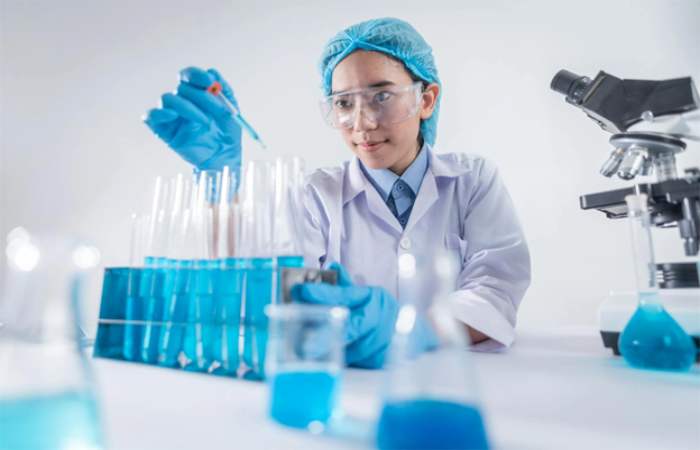In today’s scientific research scene, how well a lab runs is key to boosting productivity and cutting down on costs. As we move beyond the pandemic era, the need for quick and dependable lab results is more pressing than ever.
Projections show that the worldwide market for lab automation will rise from $3.6 billion in 2022 to $5.7 billion by 2030, highlighting the critical importance of tech upgrades in responding to the growing requirements of clinical labs. This article explores six essential tools and methods that can greatly improve lab efficiency, helping your facility stay in step with the needs of contemporary scientific investigations.
Invest in Efficient Technology
Boosting laboratory productivity is straightforward when you invest in state-of-the-art technology. Modern lab equipment offers improved speed, accuracy, and capabilities.
Take, for instance, the single cell sorter—a prime example of cutting-edge technology. This advanced device enables researchers to swiftly isolate and analyze individual cells, greatly speeding up genetic analysis, cell cultures, and other cell-based research tasks. Incorporating such innovative tools can revolutionize your workflow, delivering unmatched precision for quicker and more dependable outcomes.
Workforce Management Systems
Managing your lab team effectively is key to maintaining a high-performing laboratory. In that context, workforce management systems are essential for fine-tuning employee schedules, monitoring working hours, and handling pay with ease. For instance, by streamlining the payroll process, laboratories can cut down on mistakes and lighten the load on their team, freeing them up to concentrate on their main research tasks.
These systems boost both the smooth running of administrative tasks and employee contentment by guaranteeing precise and prompt payment handling. Additionally, the integration of these systems into mobile platforms allows team members to view and manage their schedules and time logs effortlessly, enhancing flexibility and responsiveness.
Standard Operating Procedures (SOPs)
To make sure a lab runs smoothly, it’s crucial to have clear standard operating procedures in place. These SOPs lay out the exact steps and protocols for every task, cutting down on variations and making experiments more repeatable. Creating straightforward SOPs is key for keeping lab processes consistent, especially for tricky or risky jobs, which ultimately improves safety and efficiency.
Plus, regularly updating SOPs to match the latest science and rules helps labs do top-notch research faster. This continuous refinement of SOPs also aids in maintaining compliance with ever-evolving industry standards and regulatory requirements.
Regular Training Programs
It’s essential to keep lab employees informed about the latest tech and procedural changes to keep the lab running smoothly. Regular training sessions guarantee that everyone knows what they’re doing. These sessions should include updates on equipment and software, changes in rules, and advanced research techniques.
Ongoing education isn’t just about being good at your job; it’s also about being efficient. A well-trained team is more likely to work well together. Plus, when you create an atmosphere where learning is valued, it can inspire creativity and enthusiasm, resulting in better research results. Moreover, these training programs can be tailored to individual development needs, ensuring that each team member can achieve their full potential.
Automation of Repetitive Tasks
Revamping lab operations with automation can massively boost efficiency. Mundane tasks like inputting data, organizing samples, and calibrating equipment are all ripe for automation, reducing the risk of human mistakes and giving researchers time to concentrate on more pertinent tasks.
Automated setups tirelessly operate 24/7, guaranteeing a steady workflow and unwavering results. Moreover, pairing automation with data analysis offers instant experiment insights, supercharging decision-making and experimental planning.
Efficient Use of Space and Organization
Maximizing the effectiveness of a lab hinges on how well its layout and organization are managed. A well-designed space ensures easy access to tools, equipment, and supplies while also providing proper storage solutions when they’re not in use.
Improving the layout of a lab means strategically positioning equipment to cut down on unnecessary movement and simplify workflow. Effective organization not only accelerates the research process but also lowers the chances of accidents and contamination. Introducing movable and adaptable lab furniture further boosts flexibility, enabling the space to adapt to evolving project requirements or team dynamics.

Final Thoughts
Efficiency in the laboratory doesn’t just happen; it requires a conscious effort to employ tools and techniques that streamline operations. By investing in efficient technology like single-cell sorters, utilizing workforce management systems, adhering to updated SOPs, conducting regular training, automating repetitive tasks, and organizing the lab space efficiently, labs can achieve significant improvements in productivity.
Each lab should assess its current operations and consider these strategies to enhance its overall efficiency and effectiveness in the world of scientific research.


